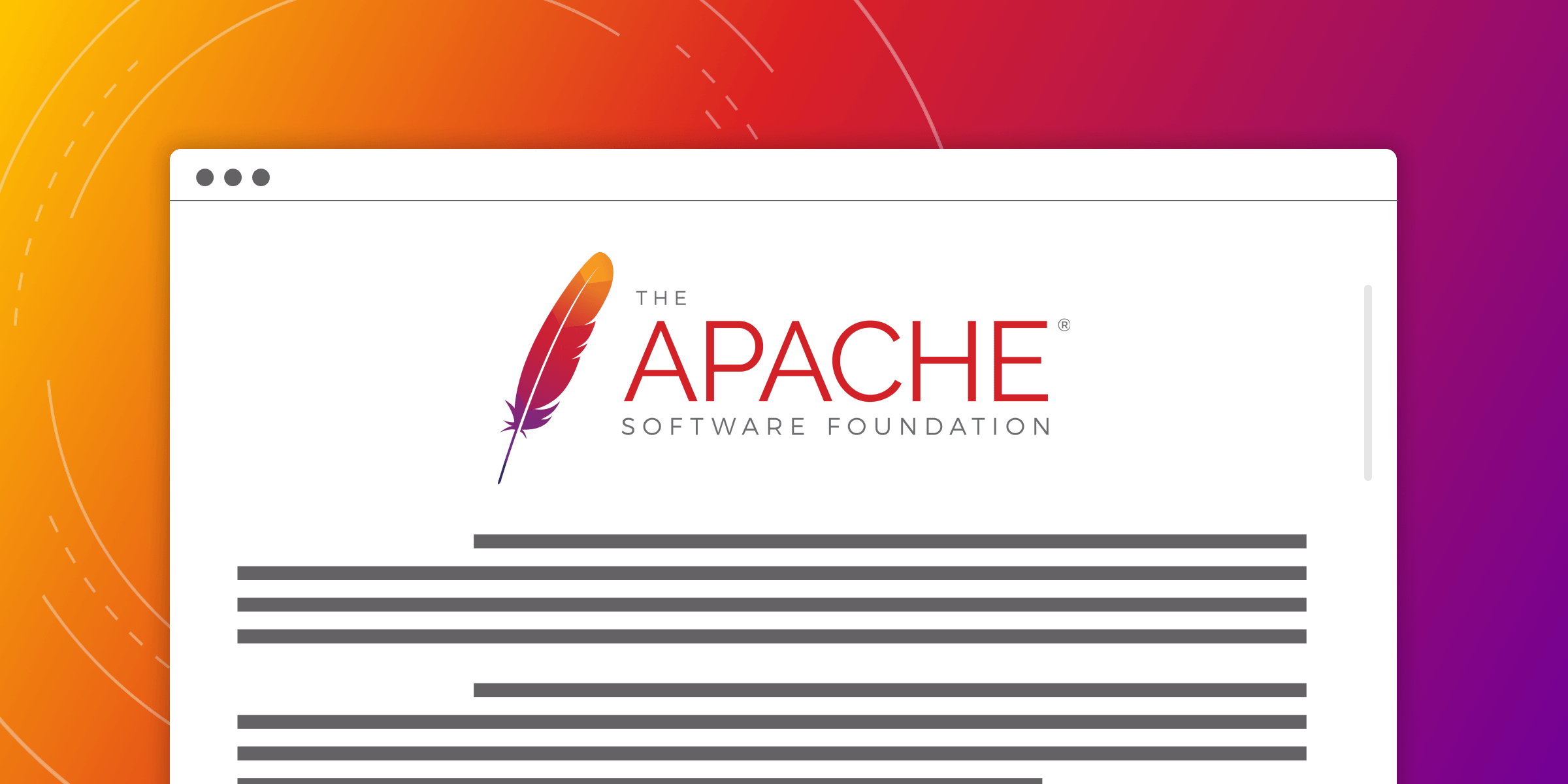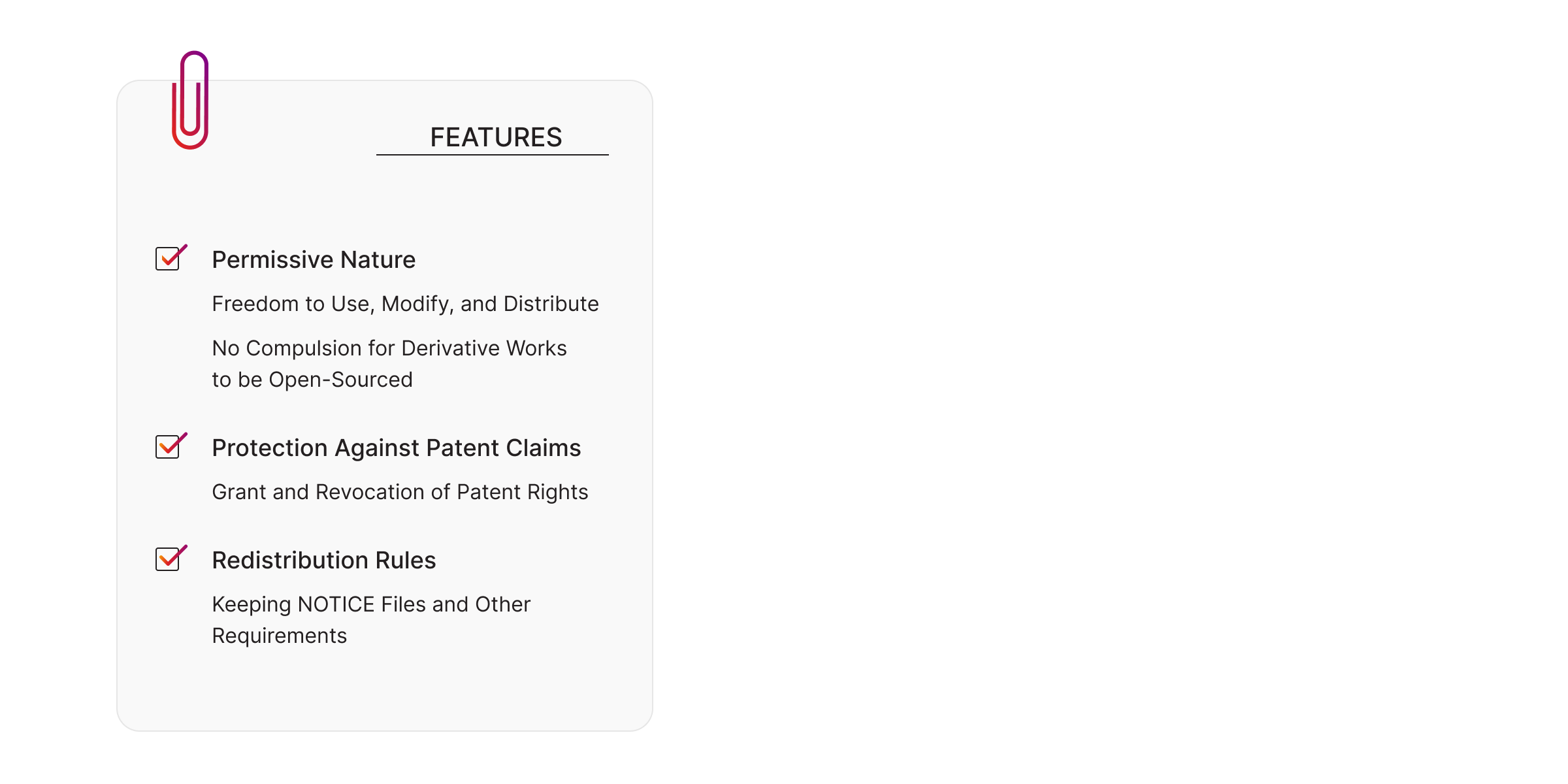
Apache License 2.0
The open-source world is flooded with a large number of licenses, each with its own set of conditions and permissions. Understanding the specifics of these licenses is important for engineers, technology enthusiasts, tech founders, and researchers. One such influential license, the Apache License 2.0, stands out in its balanced blend of freedom and protective clauses.
Origin and Evolution
The journey of the Apache License traces back to the early endeavors of the Apache Software Foundation (ASF). This non-profit organization, established in 1999, has been a catalyst for countless open-source projects, nurturing innovation and fostering collaborative software development. The ASF plays an inmporant role in the open-source community. Beyond just licensing, the foundation offers organizational, legal, and financial support to a vast array of projects. They ensure that each project under their umbrella adheres to the ASF's principles, including community-driven development and a rigorous incubation process.
The evolution of the Apache License mirrors the growth and transformation of open-source development practices. Over time, as developers and organizations encountered unique challenges, the license adapted to ensure a harmonious balance between innovation and legal protection.
Core Features of the Apache License

The Apache License 2.0 is revered in the open-source community for its clear and concise terms that foster creativity while offering legal protection. Its core features emphasize a developer-friendly approach, promoting open collaboration and innovation. Among these features, the permissive nature of the license stands as a cornerstone, providing developers with a vast scope of freedoms.
Permissive Nature
The permissiveness of the Apache License 2.0 sets a broad playground for developers and organizations alike. It promotes a culture of open collaboration by minimizing the restrictions on how the licensed software can be used, modified, and shared. This permissive stance is crucial for fostering a vibrant and innovative developer community.
Freedom to Use, Modify, and Distribute
The Apache License 2.0 champions a developer-first approach. At its core, it allows developers complete freedom to use the software in any way they deem fit. This could range from using it as a building block in larger projects to making bespoke modifications tailored to specific needs. Additionally, there is no restriction on distribution, whether the software is used in its original form, or after being significantly altered. This freedom fosters creativity and accelerates innovation, as developers are not bogged down by restrictive clauses.
No Compulsion for Derivative Works to be Open-Sourced
One of the standout attributes of the Apache License 2.0 is the flexibility it offers regarding derivative works. While the open-source spirit encourages sharing and collaboration, the Apache License 2.0 understands that not all projects can or should be open-sourced. This means that if you create a derivative work based on an Apache-licensed project, you are under no obligation to release it under the same or similar open-source license. This provides developers with the autonomy to choose the licensing model that aligns best with their project goals and business strategy.
Protection Against Patent Claims
The Apache License 2.0 provides a robust framework for mitigating patent risks that could arise in collaborative projects. It’s a proactive measure ensuring that innovation and cooperation thrive without being hampered by legal disputes. By establishing a clear stance on patent claims right from the outset, it cultivates a safe and welcoming environment for contributors and users alike.
Grant and Revocation of Patent Rights
The patent provisions embedded within the Apache License 2.0 are particularly noteworthy. When a contributor offers code to an Apache-licensed project, they are not just sharing their work; they are also granting a patent license. This means that they cannot later bring forth patent claims against users or other contributors based on the contributed work. The beauty of this clause is that it actively deters patent aggression within the community. If a contributor does decide to engage in patent litigation, their rights under the Apache License 2.0 are terminated, effectively ensuring that the larger community remains insulated from such disputes.
Redistribution Rules
Keeping NOTICE Files and Other Requirements
Redistribution is permitted and comes with its own set of responsibilities under the Apache License 2.0. Central to these is the requirement related to NOTICE files. If the software you are redistributing contains a NOTICE file, that file’s content, which may include important attributions or acknowledgments, needs to be made available in your distribution. This ensures that due credit is given to the original creators and that users of the redistributed software are made aware of its origins and any pertinent information. Besides the NOTICE file, redistributors must also include a copy of the license itself, ensuring that end-users are aware of the rights and obligations it entails.
Comparison with Other Popular Licenses
MIT License
At a glance, the MIT License and the Apache License 2.0 might seem alike due to their permissive nature. Both allow modification, distribution, and sublicensing. However, the Apache License's explicit grant and termination of patent rights provide an additional layer of protection that the MIT License lacks.
GNU GPL
The GNU General Public License (GPL) embodies the idea of 'copyleft'. This means that any derivative work must also be released under GPL, ensuring that the freedoms provided by the license are preserved. On the other hand, the Apache License 2.0 offers more flexibility, allowing developers to choose the license for their modifications.
BSD License
The BSD License, especially in its original form, is known for its simplicity. However, certain variants of the BSD License come with advertising clauses, which mandate that the original developer's name be showcased in the derivative works. The Apache License steers clear of such clauses, providing more freedom in redistribution.
Common Misconceptions about the Apache License
Despite its popularity, several myths circulate around the Apache License. A prevalent misconception is that it enforces GPL-like restrictions, which is not true. Another area of confusion is its compatibility with other licenses. Contrary to some beliefs, the Apache License 2.0 can be combined well with a multitude of licenses, rendering it a flexible choice for diverse projects.
Takeaway
The Apache License 2.0 embodies balance when it comes to open source licensing. It combines flexibility with protection, attributes that resonate deeply with developers and tech founders. Whether you're embarking on a new project or integrating open-source components into your work, the Apache License 2.0 provides a foundation that you can trust and build upon.